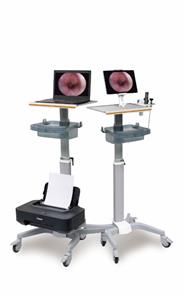What are the different types of endoscopes?
Endoscopy is a minimally invasive technique for diagnosis and surgery. The endoscope can be inserted via the mouth when exploring the stomach or bronchial tubes; via the nostrils for the nasal cavities, vocal cords or sinuses; and via the anus to examine the colon. For other examinations, it may sometimes be necessary to make small incisions to insert the endoscope, for example in the abdomen (laparoscopy).
There are three main types of endoscopes:
The rigid optical endoscope: is a rigid rod with lenses. One end of the endoscope has the lens, and at the other end there is a socket for connecting a light source and the eyepiece. It is also possible to clip a video camera head onto it.
The fiberscope (or flexible optical endoscope): works on the same principle as the rigid optical endoscope except that its stem is flexible because it is made of an optical fiber. This makes it easier to access sinuous areas, such as certain parts of the larynx. On the other hand, due to its thin, flexible and fragile stem, the fiberscope needs to be used more delicately.
Video-endoscope: the rod is usually flexible and at the end of it is a CCD sensor that allows for the acquisition of video images. For certain applications (such as a polypectomy, prostate enucleation, etc.), the stem may have one or more working channels for endoscopic instruments. The handling of a video-endoscope can be delicate, especially because of the fragility of the CCD sensor at its end. Some video laryngoscopes can be rigid. They are made up of a blade and can be equipped with an integrated video monitor to enable quick viewing, especially for an emergency intubation for example.




